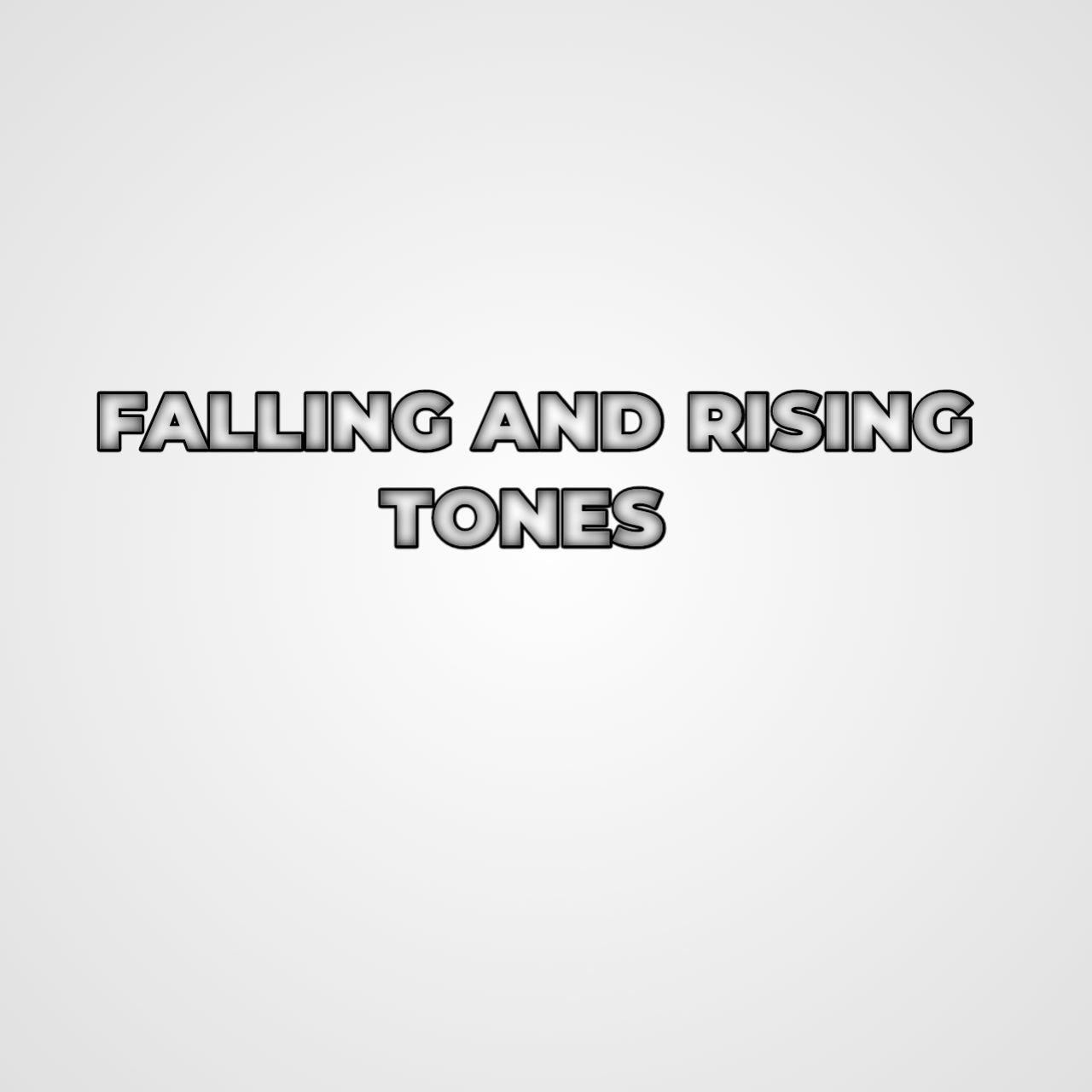In English, falling and rising tones refer to the pitch patterns or intonation used in speech. These tones help convey meaning, attitude, and emotion in a conversation:
1. Falling Tone: A falling tone is when the pitch of your voice decreases at the end of a sentence or phrase. It often indicates a statement or a declarative sentence. For example, in the sentence "She is going to the store," the pitch typically falls at the end, showing that it's a statement of fact.
2. Rising Tone: A rising tone is when the pitch of your voice increases at the end of a sentence or phrase. It's commonly used in questions, where the speaker is seeking information or confirmation. For instance, in the question "Is she going to the store?" the pitch rises at the end to signify it's a question.
These tonal patterns, along with other variations, like the falling-rising tone (common in some yes-no questions) and the level tone (used for expressing neutral statements), are essential for conveying the intended meaning and context in English speech.
1) Statement:
A statement using falling tones is a type of sentence where the pitch of the speaker's voice decreases at the end, indicating that the sentence is a declaration or an assertion of a fact or opinion. Falling tones are commonly used in statements to convey that the speaker is providing information or expressing something as a matter of fact.
For example, consider the statement: "I have a cat." In this sentence, the pitch of the speaker's voice generally falls at the end of the sentence. This falling intonation signals that the speaker is making a straightforward statement, emphasizing that they do indeed have a cat.
Falling tones in statements help distinguish them from other types of sentences, such as questions, where rising tones are used. They convey a sense of confidence and certainty in the information being presented.
2) Commands:
Commands are sentences that use falling tones to give direct instructions or orders. The falling tone at the end of a command typically conveys authority and clarity. It signifies that the speaker expects the listener to follow the instruction without question. Here are some examples of commands with falling tones:
1. "Shut the window." (The falling tone emphasizes the firmness of the command.)
2. "Pass me the pen." (The falling tone adds a sense of authority to the request.)
3. "Don't interrupt." (Even negative commands use falling tones to express a clear prohibition.)
4. "Turn off your phone." (The falling tone conveys a straightforward order.)
5. "Finish your homework." (The falling tone makes it clear that this is not a suggestion but an expectation.)
In all these examples, the falling tones serve to emphasize the directness and authority of the commands, leaving no room for ambiguity.
3) Interjection:
Interjections are words or phrases used to express strong emotions, reactions, or sudden exclamations. They can be spoken with various intonations, including falling tones, to convey the speaker's emotional state or the context of the interjection. Here's an explanation of interjections using falling tones:
1. **Surprise or Amazement**: Interjections like "Wow!" or "Oh my goodness!" are often expressed with a falling tone when something astonishing or unexpected happens. The falling tone emphasizes the speaker's awe or astonishment.
Example: "Wow, that's an incredible sunset!"
2. **Relief or Satisfaction**: When someone is relieved or satisfied, interjections may use falling tones to indicate contentment or happiness. This tone can emphasize the sense of relief or accomplishment.
Example: "Phew, I finally finished that difficult task!"
3. **Approval or Agreement**: Interjections like "Great!" or "Yes!" can be spoken with falling tones to express agreement or enthusiasm. The falling tone adds emphasis to the positive sentiment.
Example: "Yes, I agree with your proposal."
4. **Appreciation**: Words like "Thanks" or "Thank you" are often spoken with falling tones to express gratitude. The falling tone underscores the sincerity of the appreciation.
Example: "Thank you so much for your help."
Interjections, when spoken with falling tones, tend to carry a sense of conclusion or confirmation of the emotion being conveyed, making the expression more emphatic and genuine.
4) Questions:
Questions are typically associated with rising tones, as they indicate an inquiry or a request for information. However, there are some exceptions where a falling tone is used in questions. This is often seen in rhetorical questions or when the speaker already knows the answer and is making a statement that resembles a question. Here are a few examples:
1. **Rhetorical Questions**: These are questions asked for effect, where the answer is usually obvious. A falling tone may be used to emphasize that it's not a genuine request for information.
- "You think I'm going to say no?"
- "You expect me to believe that?"
2. **Tag Questions**: In some tag questions, a falling tone is used. These questions are added to a statement and often function as a way to seek agreement or confirmation.
- "You're coming to the party, aren't you?"
- "This is a great movie, don't you think?"
In these cases, the falling tone can serve to convey a degree of certainty or a rhetorical quality in the question, where the speaker expects or assumes a particular response. However, the majority of questions in English are still characterized by rising tones, especially when seeking information or clarification.
Click link to join the class for a more interactive class.
Click on classwork to get the quiz for today.





